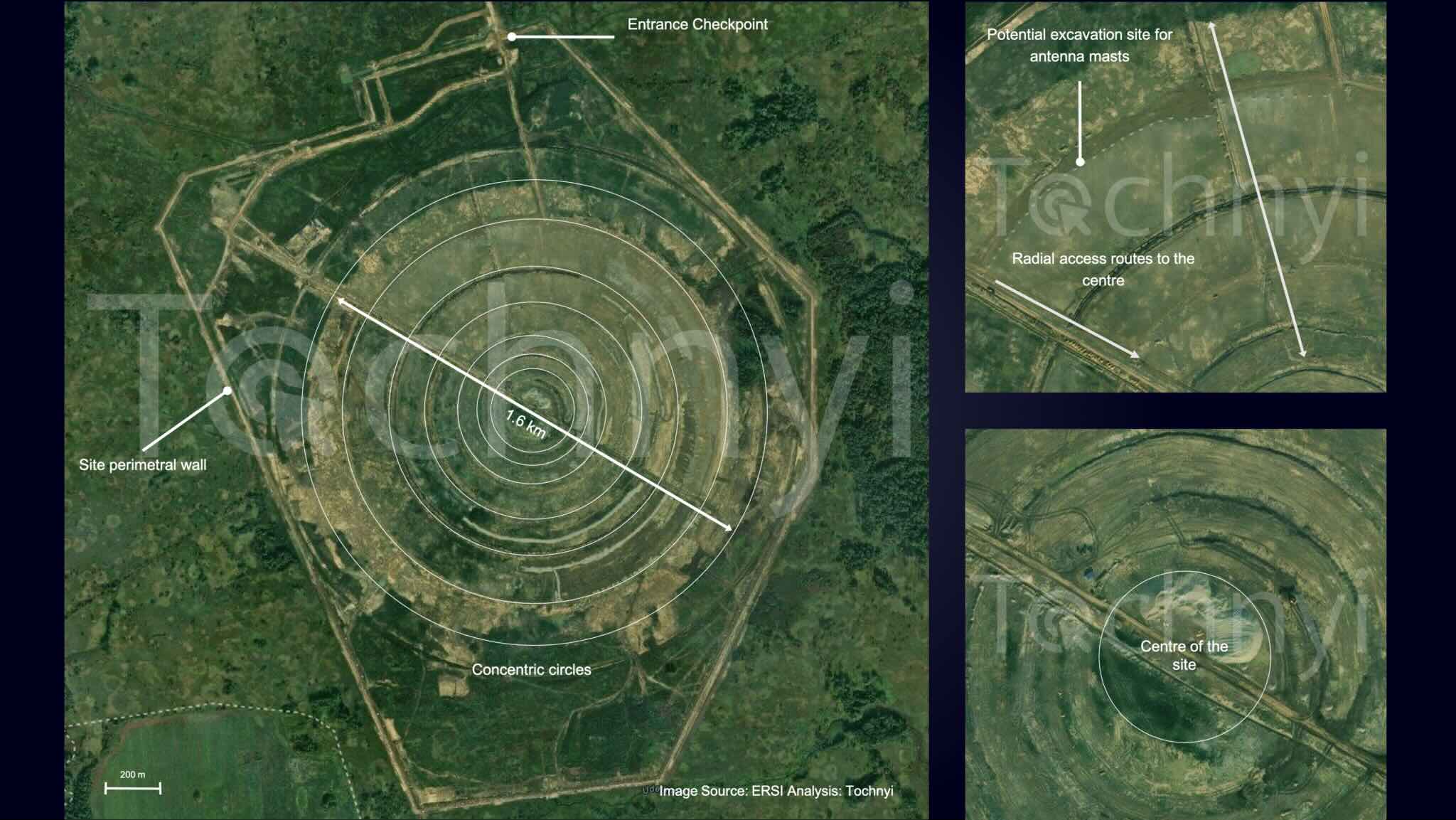


The installation resembles Cold War listening complexes and is likely intended for signals intelligence collection across the Baltic region. Moscow has not publicly acknowledged the project.
The site has been examined by Tochnyi, an open-source project that monitors military infrastructure. A time-series review of commercial imagery suggests ground works began in March 2023 and continued through mid-2025, with concentric rings and radial access roads now visible. Multiple outlets report a diameter of about 1.6 kilometres, placing the structure among the largest circularly disposed antenna arrays in Europe.
Location data point to the Chernyakhovsk district in eastern Kaliningrad. The complex appears a short distance south-east of Chernyakhovsk air base, which is operated by the Russian Navy’s Baltic Fleet. Sited there, the array would be within immediate reach of the Baltic Sea and the land borders with Poland and Lithuania.
Analysts judge the pattern and scale to be consistent with a circularly disposed antenna array (CDAA), also known as a Wullenweber. CDAAs are used for high-frequency radio direction-finding: by comparing phase and amplitude across many elements arranged in rings, operators can derive bearings to transmitters and, when combined with other stations, geolocate emitters. Similar arrays were operated by both blocs during the Cold War for long-range interception and location of signals.
If confirmed, a 1.6-kilometre CDAA in Kaliningrad would have reach across much of Poland, Lithuania, Latvia and the southern Baltic Sea. It could collect emissions from military aviation, maritime platforms and ground networks working in the high-frequency bands. Some coverage also suggests potential support to very-low-frequency reception used for submarine communications, though the visible configuration aligns primarily with receive-only direction-finding rather than transmission. The precise tasking, frequency plan and collection priorities remain unknown.
Kaliningrad is one of Russia’s most militarised regions, hosting naval, air and air-defence units that support the Baltic Fleet. A fixed, high-aperture listening complex would fit a long-term effort to improve situational awareness in the Baltic theatre, complementing mobile electronic-warfare systems and coastal sensors. For NATO members around the Baltic, a completed site would represent a persistent collection point located close to national airspace and sea lanes.